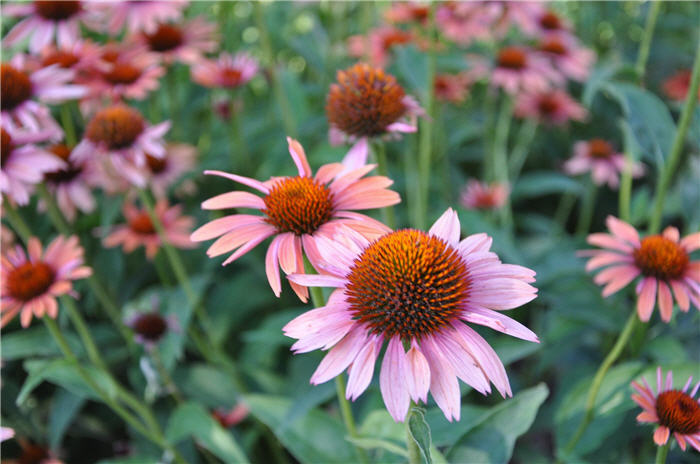| Botanical Name: Echinacea purpurea | |
| Common Name: Purple Coneflower |

-
Anatomy
-
Culture
-
Design
Plant Type
Perennial
Height Range
1-3'
Flower Color
Purple
Flower Season
Summer
Leaf Color
Green
Bark Color
n/a
Fruit Color
n/a
Fruit Season
n/a
Sun
Full, Half
Water
High
Growth Rate
Fast
Soil Type
Sandy, Clay, Loam, Rocky, Unparticular
Soil Condition
Average, Rich, Well-drained
Soil pH
Acid, Neutral
Adverse Factors
Attracts Bees
Design Styles
English Cottage, Meadow, Woodland
Accenting Features
Showy Flowers
Seasonal Interest
Summer
Location Uses
Perennial Border, Parking Strip, Patio
Special Uses
Cut Flowers, Mass Planting, Naturalizing
Attracts Wildlife
Butterflies
Information by: Stephanie Duer
Photographer: Linda Engstrom
Photographer: Linda Engstrom
-
Description
-
Notes
The Purple Coneflower is a long-lived, reliable standby for the perennial garden. And while not xeric, it manages quite well with just weekly watering. Rosy purple petals fall below the prominent orange-tinged cone and blooms in late June to September. Foliage is large, with a rounded lance shape. An excellent cut flower, they provide nectar for bumblebees and butterflies, and the seeds provide forage for migrating song birds, so don't cut them all!
Plant in compost enriched soil that is well drained. Will grow in sun to part shade. Flowers left to dry on the plant will produce seed that will be enjoyed by birds, and may reseed to create a lovely, natural-looking garden. Not terribly drought tolerant in our hot valley, but they would do well in a moderly watered garden, or in the bench areas.